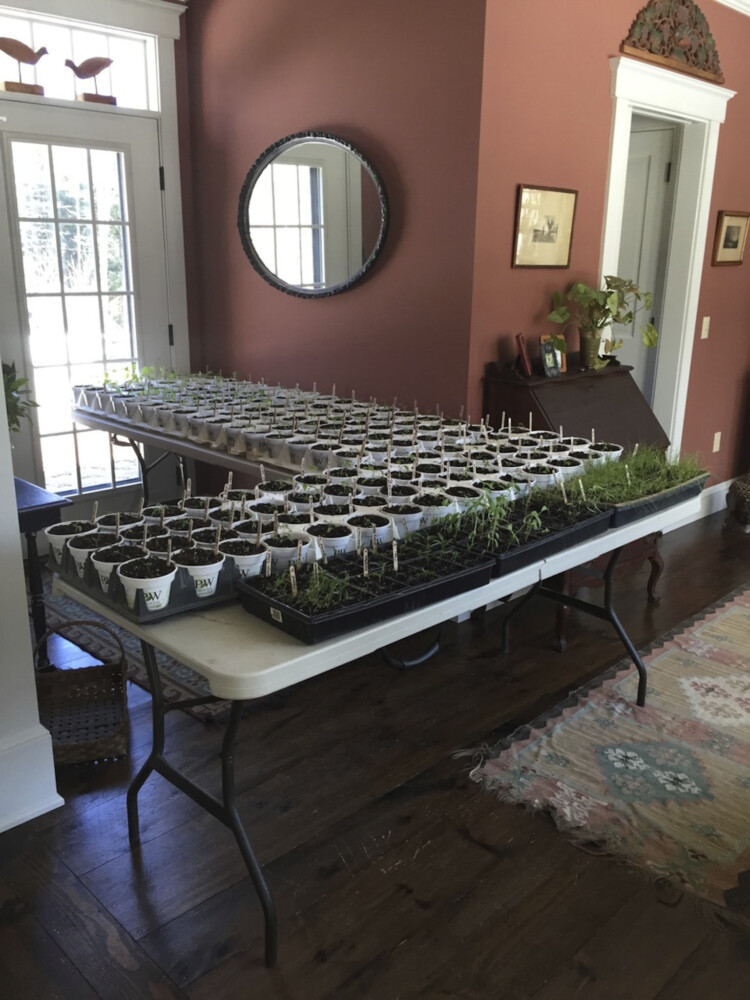Happy anniversary. That’s for the anniversary, not the event the anniversary marks.
A year ago this week Maine, and much of the rest of the country, went into lockdown. As it was relatively warm and the vegetable garden was free of snow, I planted lettuce in a cold frame.
I am writing this ahead of time, but if the garden is free of snow again this week, I will do that again. The lockdown has loosened, but it isn’t over. Meanwhile, gardeners can do many things between now and Patriots’ Day (April 19), the traditional start of the gardening season for Mainers. This work will keep their year more productive no matter how many other things they are allowed, or not allowed, to do.
If you haven’t cleaned and sharpened your tools, do it now. I’ve already done that chore, in the cellar while it was too cold to work comfortably outside, listening to every John Prine CD I own – there are a lot of them.
Once you’ve sharpened your loppers and pruners, use them to prune. Late winter or early spring is the recommended time for pruning most trees and shrubs, as they are still dormant and they have no leaves, making it easier to figure out which branches to cut. But avoid early spring blooming shrubs, such as lilacs, at this time unless you’re OK with removing blooms along with the branches.
Pruning is common sense. Remove any branches that are dead or damaged. Next, remove any that are rubbing against each other, crossing or heading in a direction you don’t like. I like to do it about now, because it is warm enough to be comfortable for us humans but not so warm that the sap is flowing – except for maples. I will be pruning our blueberries, peach tree and an apple tree, which last year produced just two apples but always blossoms nicely. While stringing Christmas lights on it last fall, I noticed that it was way too twiggy and needed work.
I cleaned out the old canes on our raspberries last fall because I had the time, but most years I have done that in the spring, too. Raspberries produce shoots one year and produce berries on those shoots the second year. After producing fruit, they become more brittle and lighter colored — those are the ones that should come out now. Pruning is more complicated if you grow ever-bearing raspberries, which produce a crop in late June/early July and a second crop in the fall. In that case, cut off the top of the canes, where they produced berries last year.
Now is also a good time to spray trees and shrubs with dormant oil. Dormant oil, as its name implies, does not react chemically with the trees on which it is sprayed. Either vegetable- or petroleum-based, it smothers the eggs of insect pests before they can emerge as larvae, but it has little impact on beneficial insects.
I first used dormant oil about five years ago when winter moth was decimating hardwoods in Cape Elizabeth, where I live. I wanted to protect our blueberry bushes, but it is used a lot in apple orchards, and can be used on evergreens and deciduous trees, as well. It leaves no harmful chemical residue. Spraying the oil is something that I can do to at this time of year to make trees and shrubs healthier.
Many people start their own vegetable seedlings, something my wife Nancy (mostly) and I (a little bit) used to do before we began taking late-winter and early-spring vacations. With vacation travel restricted again this year, for about 10 seconds I considered starting some pepper and tomato seedlings, and then dropped the idea.
Growing your own seedlings can save you a lot of money, and give you a broader selection of varieties to grow. But because Mainers keep their houses cooler than these baby plants like and don’t get enough sun from windows, you need artificial lights and heating pads. The University of Maine Cooperative Extension has a wonderful bulletin, Starting Seeds at Home, that details how to do this. Written in 2008, the pamphlet was updated this January; I noticed the update suggests improved lighting systems. If you don’t do computers, you can get a print copy by calling your local extension office.
I had excellent luck last season buying curbside-pickup seedlings from a nursery in our hometown, and that is what I plan to do this year. I like helping the local economy – and avoiding the mess of starting most seedlings.
Actually, I started some seed this year. I planted leaf lettuce in early January that I’ve kept in our home in south- and east-facing windows. It hasn’t progressed much, but if it isn’t large enough to harvest by the time this column appears, I may transplant the seedlings to the cold frame at the same time I plant seed.
It’ll be a race to see which produces edible lettuce first— the seeds or the seedlings.
Tom Atwell is a freelance writer gardening in Cape Elizabeth. He can be contacted at: tomatwell@me.com
Send questions/comments to the editors.




Success. Please wait for the page to reload. If the page does not reload within 5 seconds, please refresh the page.
Enter your email and password to access comments.
Hi, to comment on stories you must . This profile is in addition to your subscription and website login.
Already have a commenting profile? .
Invalid username/password.
Please check your email to confirm and complete your registration.
Only subscribers are eligible to post comments. Please subscribe or login first for digital access. Here’s why.
Use the form below to reset your password. When you've submitted your account email, we will send an email with a reset code.